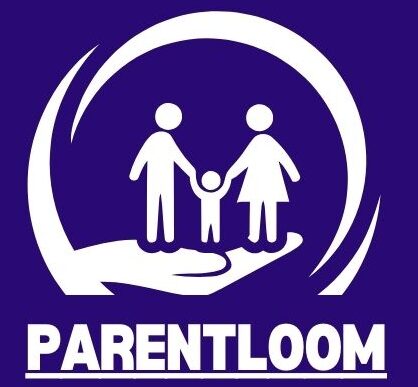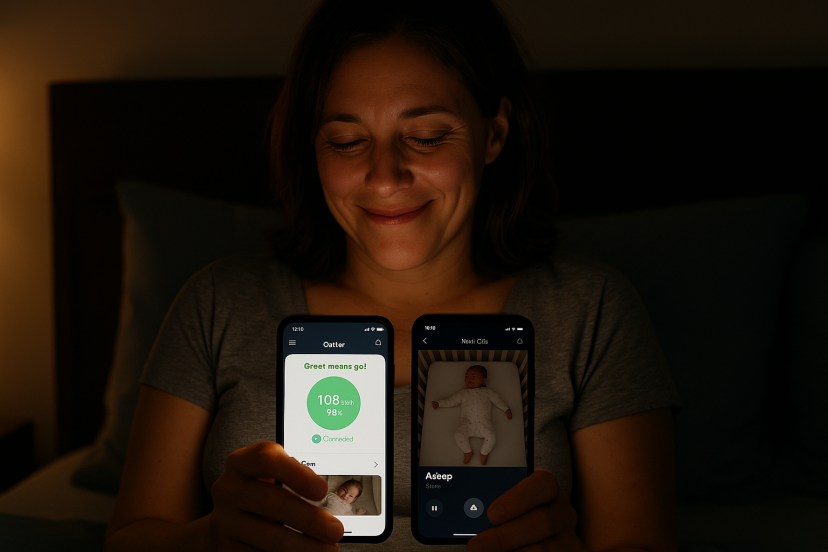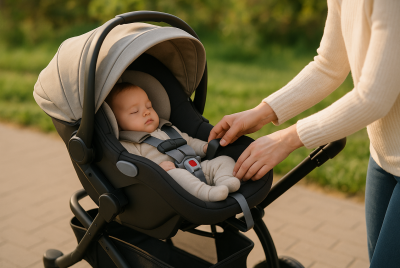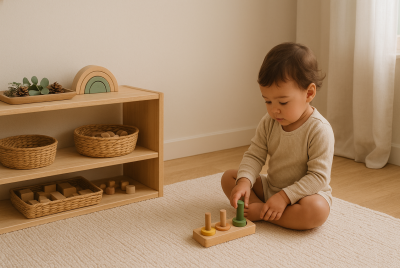Owlet vs Nanit: Which Baby Monitor Should You Choose?
We may earn a commission for purchases made using our links. Please see our disclosure to learn more.
Bringing a new baby home is equal parts joy and worry. Sleep becomes sacred, and peace of mind is priceless. If you’ve been scrolling late at night wondering about Owlet vs Nanit—you’re not alone. Parents everywhere are trying to decide which baby monitor gives them the best mix of safety, technology, and reassurance.
I’ll never forget those first few nights after we brought our baby home. Every tiny squeak, every pause in her breathing had me sitting up in bed, phone flashlight in hand, checking her crib. That’s the heart of this choice—you’re not just picking a monitor, you’re choosing peace of mind.
In this article, I’ll walk you through everything you need to know: how these monitors differ, what real parents love (and don’t love), which features actually matter, and which one is worth your investment. By the end, you’ll know exactly which monitor fits your family’s needs.
Understanding the Basics of Owlet and Nanit
Think of Owlet and Nanit as two different parenting styles in tech form.
- Owlet is like that cautious friend who always says, “Better safe than sorry.” It focuses on heart rate and oxygen levels, making sure your baby’s vitals are steady.
- Nanit feels more like the wise mentor who says, “Let’s help your baby sleep better.” It’s built for tracking sleep habits with stunning video and coaching insights.
Both are great, but what matters is which kind of support you need most during those 2 a.m. check-ins.
What Makes Owlet Unique?
Owlet stands out because it goes beyond video—it helps you track health.
Key Features of Owlet
- Wearable Smart Sock for heart rate & oxygen tracking
- Notifications if readings move out of preset ranges
- 1080p HD video camera (with Owlet Cam)
- Sleep tracking reports for peace of mind
Pros of Owlet
- Adds a medical-style layer of reassurance
- Great for parents of preemies or babies with health concerns
- Easy-to-use app for real-time updates
Cons of Owlet
- Pricier than standard monitors
- Sock may not stay on fussy kickers
- Requires regular charging
💭 Anecdote: A friend of mine swears Owlet gave her the courage to finally sleep more than an hour at a time. Her son was born prematurely, and those oxygen alerts felt like having a nurse by her side all night.
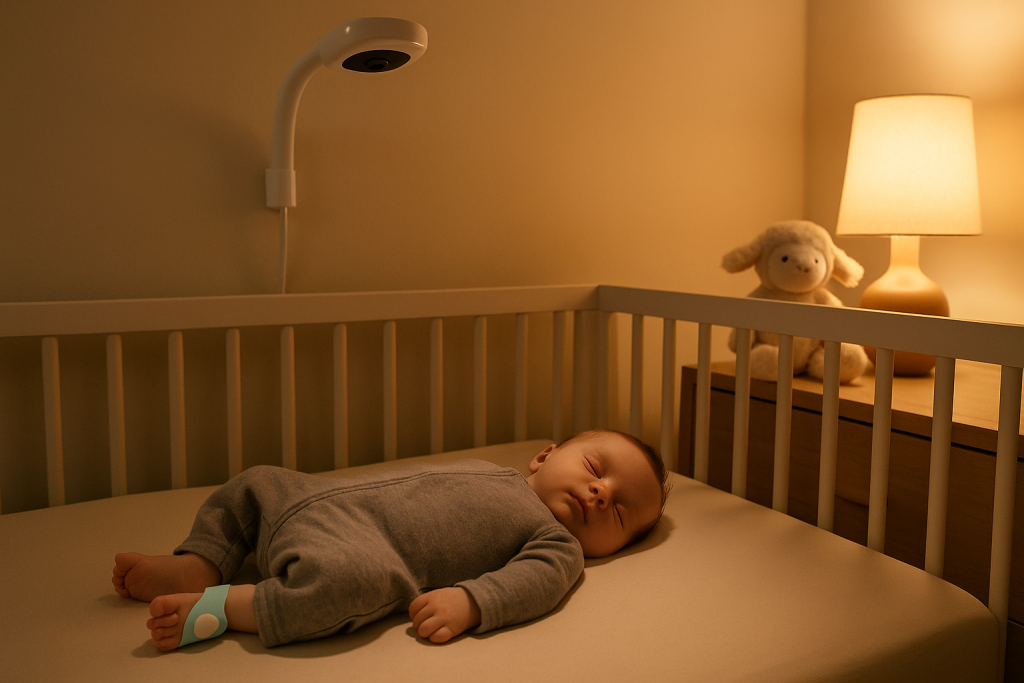
What Makes Nanit Unique?
Nanit is like the “baby sleep coach” built into your nursery.
Key Features of Nanit
- 1080p overhead video with night vision
- Sleep insights and analytics
- Breathing Wear (optional band or swaddle) for movement monitoring
- Two-way audio and background listening
Pros of Nanit
- Crystal-clear video quality
- Excellent for sleep training support
- Breathing monitoring without wires or wearables
- Works seamlessly with Alexa
Cons of Nanit
- Subscription required for full sleep tracking
- No direct oxygen/heart rate tracking
- Setup may be tricky for some
💭 Anecdote: Another mom told me Nanit felt like “a sleep consultant who never clocks out.” She said the app gently nudged her to notice her baby’s sleep windows—something she admits she would’ve missed at 3 a.m.
Owlet vs Nanit: Video Quality
Video quality is like having glasses for your nursery—do you want crystal-clear detail or just enough to see shapes moving?
If video clarity is your priority, Nanit wins. Its overhead mount gives a bird’s-eye view, making it easier to see everything in the crib. Owlet’s camera is solid, but it doesn’t quite match Nanit’s angle and analytics.
Owlet vs Nanit: Health Tracking
Here’s where Owlet shines. Nanit’s breathing band detects motion but doesn’t measure oxygen or heart rate. If you want medical-style monitoring, Owlet is the stronger choice.
It’s like comparing a Fitbit to a smartwatch: one gives you detailed vitals, the other keeps track of lifestyle habits. Both are valuable—just in different ways.
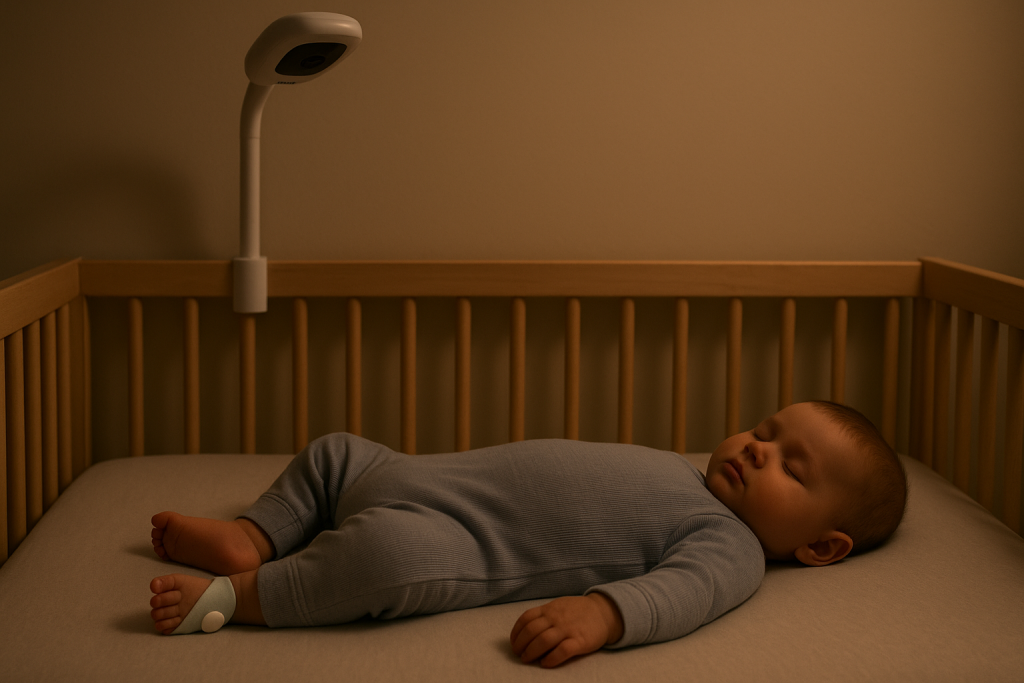
Owlet vs Nanit: Ease of Use
Both have sleek apps, but Nanit’s user interface feels more intuitive for day-to-day sleep monitoring. Owlet requires keeping the sock charged and snug, which can be an extra step.
Think of it as the difference between slipping into sneakers versus buckling up hiking boots—both get the job done, but one takes a little more effort.
Owlet vs Nanit: Subscriptions & Costs
- Owlet: Upfront cost is higher for the Smart Sock, but ongoing subscription is optional.
- Nanit: Requires a subscription for advanced sleep insights, cloud storage, and growth tracking.
💭 Reflection: It’s a bit like streaming services—you’ll need to ask yourself, “Do I really want those extra features, or will the basics do?”
Which Parents Should Choose Owlet?
- Parents of preemies or babies with health conditions
- Anyone who wants medical-style reassurance
- Families who prefer wearable tracking
Which Parents Should Choose Nanit?
- Parents who prioritize sleep analytics and coaching
- Tech-savvy families who want video excellence
- Anyone who prefers non-wearable monitoring
Product Recommendations (Amazon Affiliate Picks)
Here are some of the top-rated options available on Amazon:
1. Owlet Dream Sock + Cam
- Tracks heart rate, oxygen, and sleep trends
- 1080p HD video with app integration
- 🟢 Pros: Complete peace of mind, great for health-conscious parents
- 🔴 Cons: Sock needs charging, higher price
2. Owlet Cam 2
- Affordable camera-only option
- Live stream video and sound alerts
- 🟢 Pros: Lower cost than full bundle
- 🔴 Cons: No vital tracking without the sock
3. Nanit Pro Camera with Floor Stand
- Bird’s-eye view of the crib
- Advanced sleep tracking
- 🟢 Pros: Top-tier video, great app
- 🔴 Cons: Subscription required
4. Nanit Breathing Wear Band
- Works with Nanit Pro Camera
- Tracks baby’s breaths per minute
- 🟢 Pros: No wires or wearables on the baby
- 🔴 Cons: Doesn’t measure oxygen levels
5. Nanit Pro Complete Monitoring System
- Includes camera, breathing wear, and travel stand
- Full sleep insights
- 🟢 Pros: All-in-one package
- 🔴 Cons: Higher cost upfront
Owlet vs Nanit: Side-by-Side Comparison
| Feature | Owlet | Nanit |
| Health Tracking | Heart rate & oxygen levels | Breathing motion only |
| Video Quality | 1080p, static view | 1080p, overhead view |
| Sleep Tracking | Basic sleep reports | Advanced analytics |
| Wearable? | Yes (Sock) | Optional (Breathing Band) |
| Subscription Needed? | Optional | Required for advanced features |
| Best For | Health monitoring | Sleep coaching & analytics |

🧪 Research-Backed Section
Studies show that parental anxiety can significantly improve with health-tracking devices. A review in the Journal of Pediatrics highlighted how continuous monitoring helps reduce nighttime stress for parents of infants with medical conditions (read the study summary here).
Meanwhile, sleep experts emphasize that monitoring sleep patterns helps parents establish healthy sleep habits. The Sleep Foundation notes that consistent tracking can lead to better infant sleep quality over time (see their research overview).
FAQs
Is Owlet worth it for healthy babies?
Yes, but it’s most valuable for babies with health concerns. For healthy infants, Nanit may offer more long-term benefits.
Does Nanit work without paying for a subscription?
Yes, but you’ll miss out on sleep insights and video history.
Will Owlet and Nanit function without a Wi-Fi connection?
Both require Wi-Fi for app features, though Nanit offers limited offline functions.
Which is easier to travel with, Owlet or Nanit?
Owlet is easier since you can just pack the sock and camera. Nanit requires its stand, which is bulkier.
Are Owlet and Nanit safe for newborns?
Yes, both are designed with infant safety in mind when used as instructed.
Helpful Resource
If you’re looking for creative family activities beyond screens, check out these screen-free summer activities for kids.
Conclusion
When it comes to Owlet vs Nanit, the choice really depends on your priorities. If you want peace of mind with health tracking, Owlet is your winner. If you want the ultimate sleep coach with crystal-clear video, Nanit takes the crown.
Think of it like choosing between a stethoscope and a coach’s whistle. Each one brings value, but their purposes aren’t the same. What matters most is which one helps you feel confident and rested as a parent.
No matter which you choose, the most important thing is your baby’s safety—and your peace of mind.
